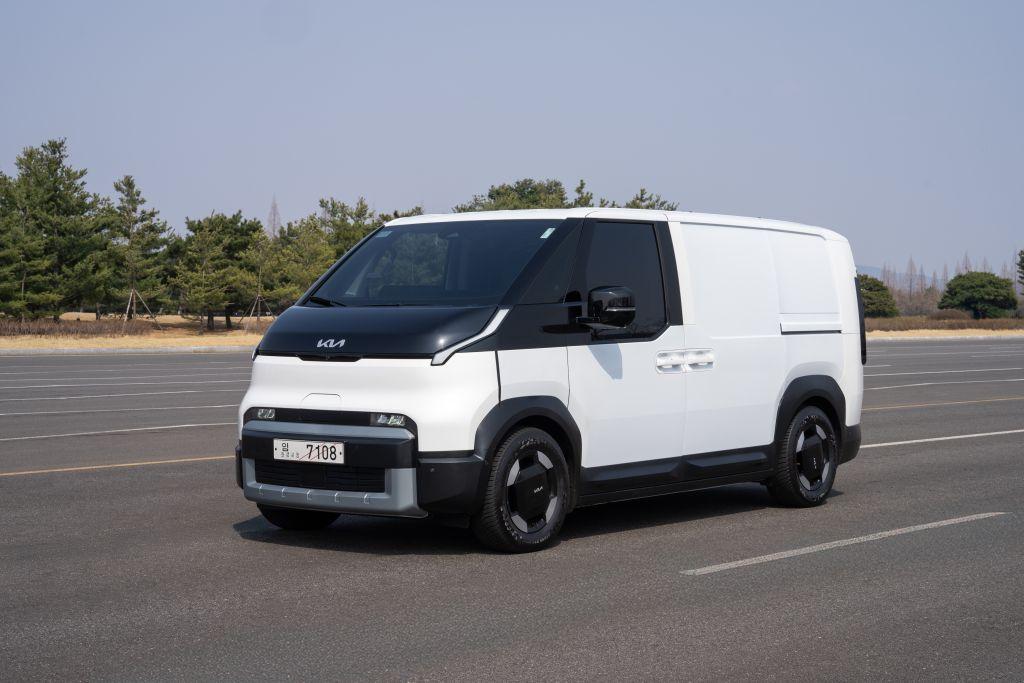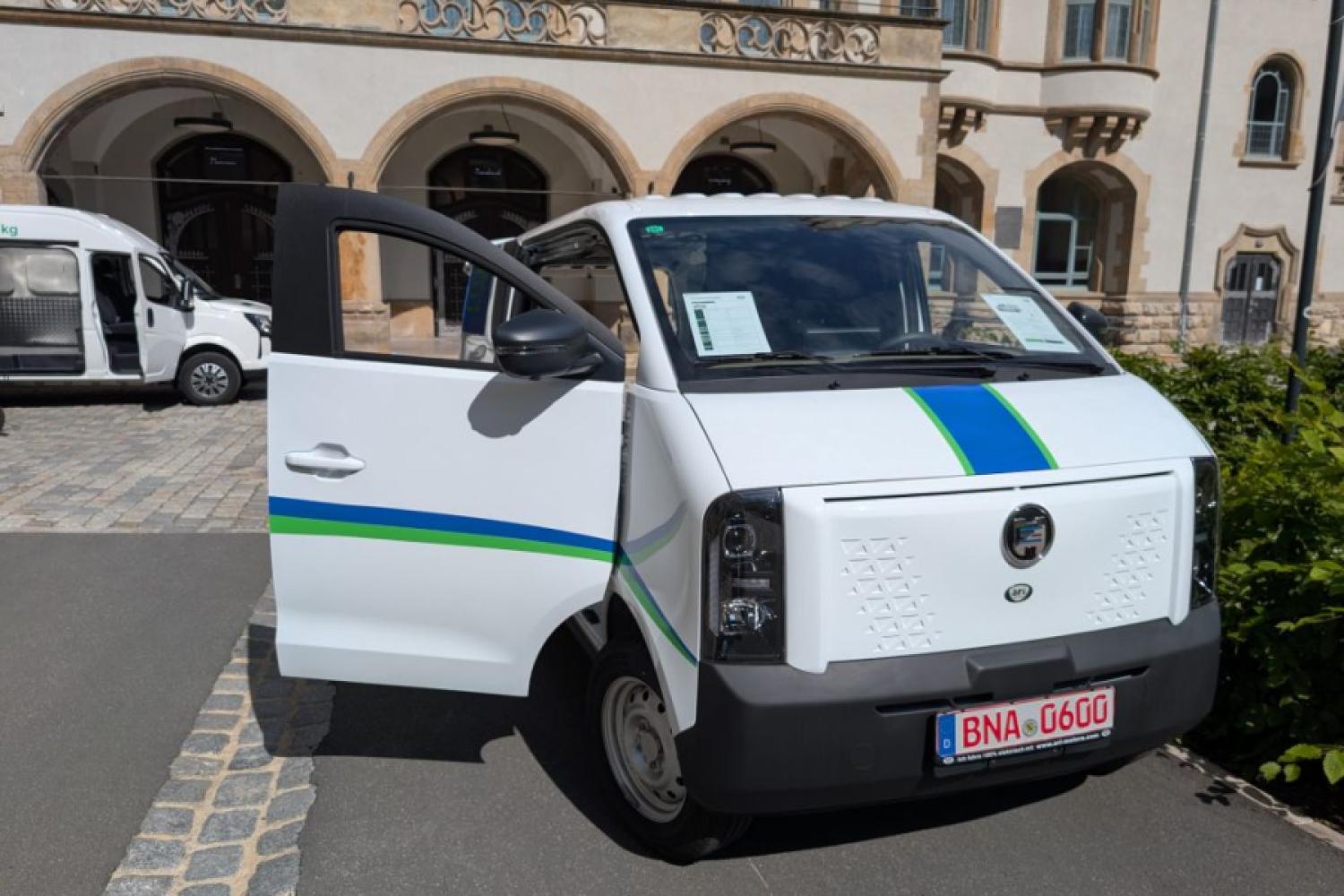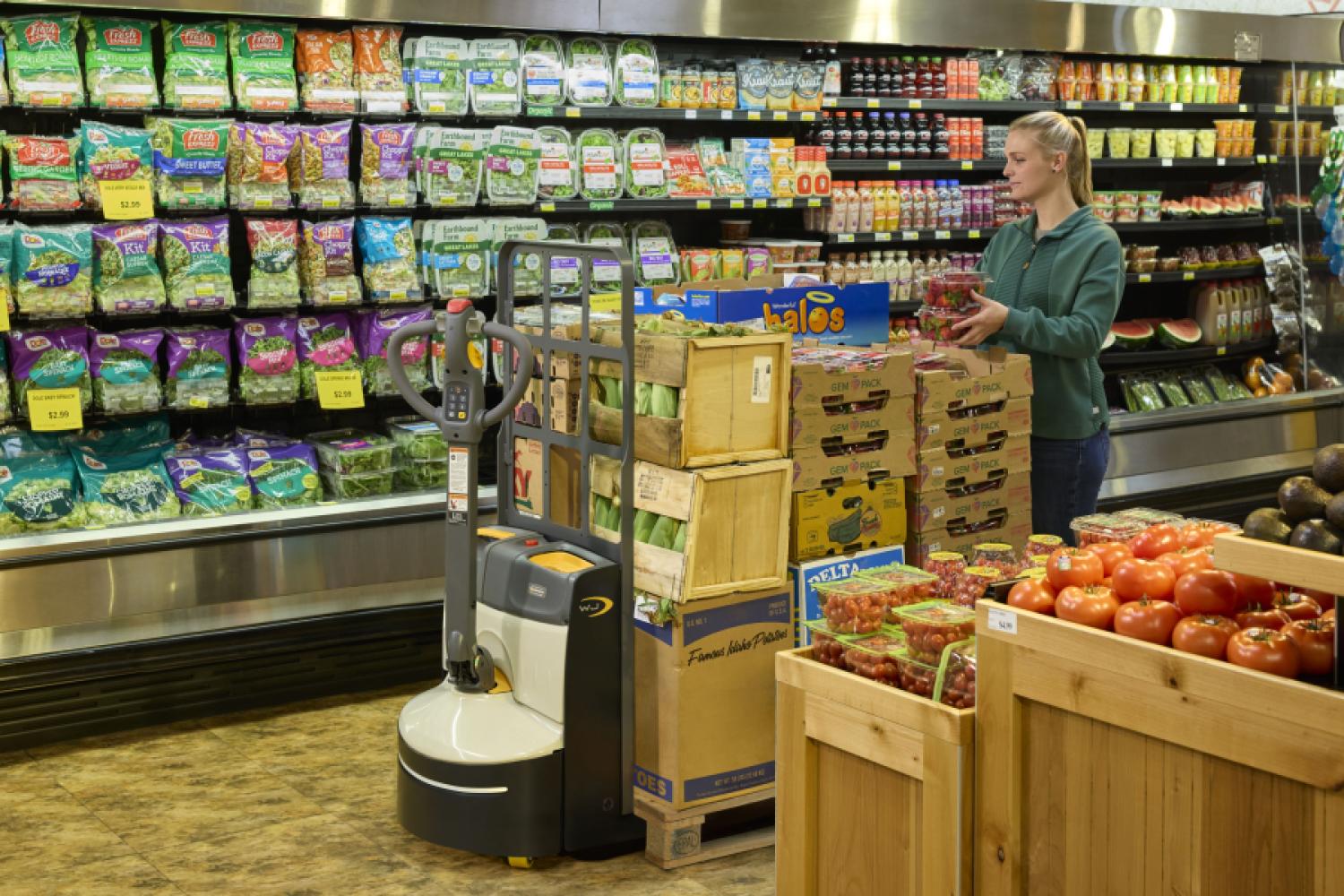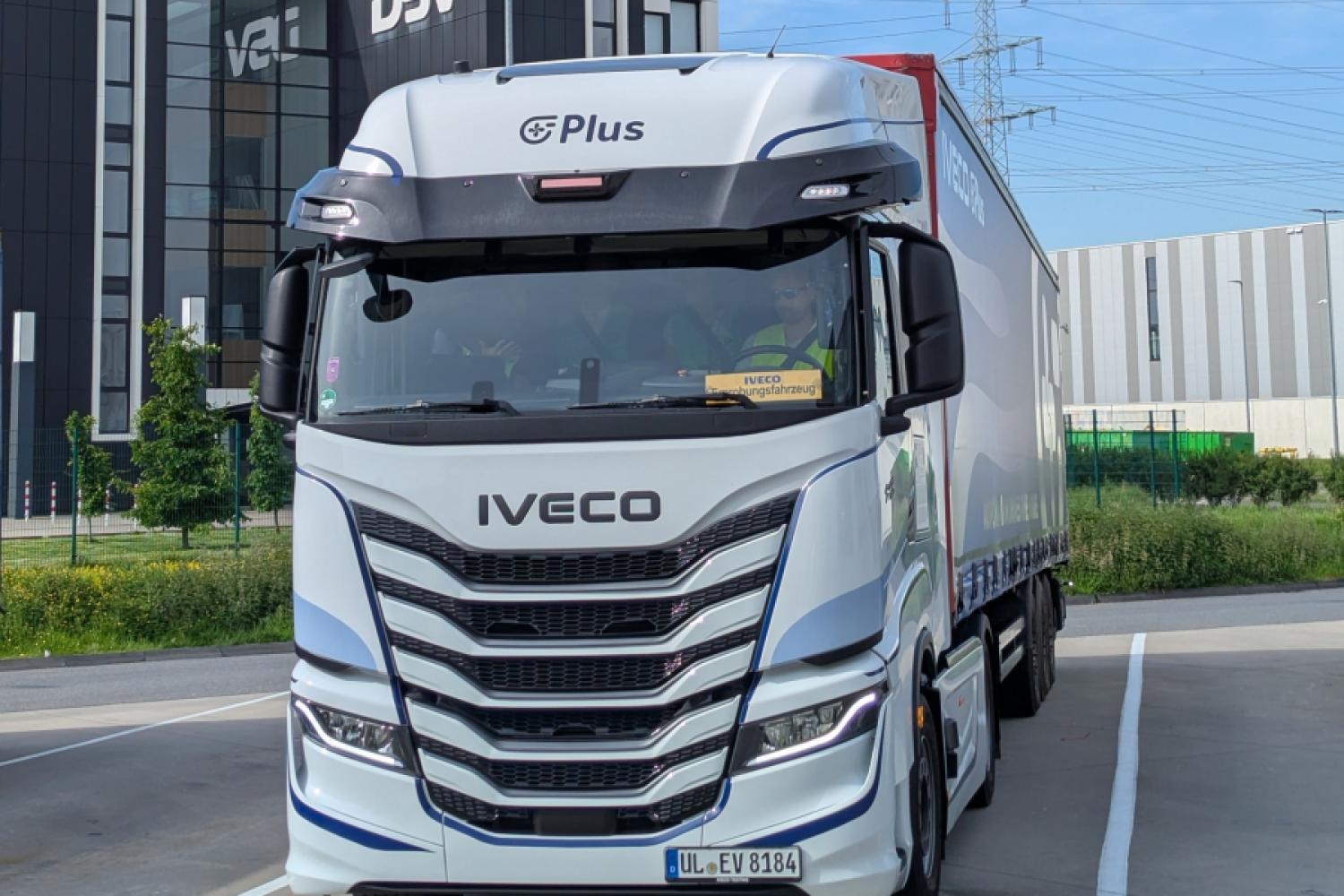They really did it: Anyone wondering whether the Koreans would be bold enough to implement what is quite an unconventional design for a van, is now looking at the sheet-metal answer. The Kia makers are taking a triple risk with this: It’s not just that, as a van brand, they’ve interrupted the thread with previously successful models like Bongo or Besta and now have to start almost from scratch. They are fully relying on a dedicated and modularly built electric platform, the e-GMPs (Skateboard), leaving the combustion engine era completely behind. And that’s without the safety net and double protection of a multi-drive base, which most competitors use, except perhaps the Maxus eDeliver5 and the VW ID.Buzz. However, the latter is more of a car-van than a "true" commercial vehicle, not least due to the high price. Of course, the boldness has attracted competitors' attention – Renault, with its Flexis joint venture, is now doing this too, and Mercedes has been talking about its VAN.EA platform for a long time but has now got cold feet or lost its nerve and quickly added a VAN.CA counterpart.
Kia is taking a big risk
So, as the saying goes, Kia is going "all in" and wants to mitigate the risk of the pure electric drive with convincing features and, above all, costs. The aim is for customers not to miss the "good old diesel" at all, making diesel simply obsolete. A competitive price of 33,000 euros net for the urban-oriented base version with a 43-kWh LFP battery (238 km range) is certainly tempting and a statement to the competition. With the 51-kWh battery, then lithium-ion NMC, the PV5 becomes a mid-ranger (291 km) or with a 71-kWh battery even a long-distance electric vehicle (397 km), which thanks to a 150 kW fast charger can charge from 10 to 80 percent in under half an hour, or with an optional 22 kW AC charger even during a lunch break. Or it can discharge power, serving as a mobile power bank with V2L or as a grid-compatible energy storage with V2G capability. A powerful ePTO as an electric auxiliary drive is also intended.
Not just delivering a vehicle, but a system
Oh, the PV5 can also handle the simple Plug & Charge, as long as the charging station and provider support it. Kia plans to deliver the charging infrastructure to customers anyway, including complete depot charging solutions. Moreover, the E-van should save significantly in operation, thanks to high efficiency, low operating costs, and equally low maintenance and service expenditures, which include details like a three-part bumper or the affordable 16-inch wheels. As well as the standard connectivity via modem, which
makes the vehicle a "data carrier" and delivers countless parameters to an app or a Geotab telematics, enabling preventive maintenance or connection to attachments. Finally, Kia aims to inspire confidence with a ten-year warranty for 200,000 km on the vehicle and E-drive.
Durable lifespan: Twelve-year lifecycle
Additionally, the vehicle is simply meant to last twelve years at a minimum – and is designed for 600,000 kilometers of mileage. Ultimately, the argument should also resonate that thanks to the pure electric concept, which enables a completely different layout due to the compact drive and battery setup, you get a vehicle with the space of a C-segment vehicle and the footprint of a D-segment van. That means a Caddy with nearly as much space as a Bulli, at least in L2H2 (4.69 m, partition wall with sliding door & retractable folding seat available). The 4.5-meter short base offers significantly more space with 4.4 cubic meters than a 4.85-meter long Caddy Maxi, on much less area. The L2 version with 20 centimeters longer overhang then packs away 5.1 cubic meters, almost reaching Mercedes Vito or VW T7 values. Consequently, two pallets always fit into the 2.05 to 2.25 meter long, 1.51 to 1.81 meter high, and 42 millimeter low loading edge at the rear, thanks to the flat battery construction of the 4.5-meter van, which drives at compact van dimensions with a width of 1.89 and a height of 1.90 meters.
Unique feature: Super deep cargo area
Incidentally, this creates a sort of curb inside between the slim wheel arches – if you need a level surface here, you can order a Flex-Rack for the ample luggage compartment with the Kombi, or an elevated loading floor at wheel arch level with the van, then with underfloor storage options. This results in 1.33 meters width between the wheel arches (with 1.56 overall loading width), also a top value – and allows for transporting two pallets, as the rather wide but not adequately large 77-centimeter sliding door does not permit side loading. The base offers 735 kilograms of cargo, increasing to 790 with the middle battery and higher total weight, but the 71-kWh transporter maintains its dimensions thanks to the slim battery package and should be able to carry 690 kilos. For each additional 100 kilos of payload, consumption would only increase by 1.5 percent, claim Kia engineers, boasting another top value in the segment. If you calculate the preliminary ranges and battery sizes by consumption, the PV5 with roughly 18 kWh/100 km would indeed be a very economical E-van, following the lead of its EV sibling cars, benefiting from their acknowledged advanced technology within the Hyundai corporate construction kit.
Flexible
manufacturing with individual potential
With flexible production in a brand-new, highly automated and digitized factory in Hwaseong, Korea, they aim to realize a kind of "personalized mass production" that not only offers the key derivatives like chassis, dry freight bodies (5.5/6.9/7.9 m³ with 4.99 m length & 2.1/2.45/2.65 m length), frigo, flatbed, Kombi (5/6/7 seats), wheelchair accessible, light camper, or additional industry models and feature offerings in cooperation with renowned equipment and body manufacturers, but can also depict company branding decals ex-factory.
If a service is required, it should be handled through the well-established dealer network, unlike the new Chinese brands. Reportedly, there has been considerable interest from dealers in the PBV project, and the network is expected to be dense from the start, with many of the roughly 2,660 dealers in Europe participating. Without this, as the "big sister" Hyundai already learned in its failed attempt with the H350, nothing works in the commercial business, no matter how convincing the product is, and the H350 was indeed convincing. But conversely, of course, it also applies: no chance without a good product.
Drives like a big EV3
This holds true without doubt for the PV5, based on the very first driving impressions from pre-production models. Through maximum use of synergies with the passenger car division, a bus version of the finely driving EV3 emerged in principle. The synchronous front motor starts smoothly but without haste and traction issues, propelling the van swiftly and with a quiet whir to cruising speed. The road presence is solid and secure, the handling relaxed and easy, and the body already seems rigid and creak-free. The steering could still be more precise for European tastes and the chassis a bit stiffer. However, the ride comfort already appears quite good, as does the rolling and noise comfort until 100 km/h. At 120 km/h, the wind becomes noticeably more apparent on the angular body. But there will certainly be further adjustments in the soundproofed E-van.
Great class, small turning circle
It’s a great class, with a super small turning circle of about ten meters and finely adjustable recuperation via steering wheel paddles up to "i-Pedal" with real one-pedal driving, virtually doing away with the need for the brakes. As far as safety is concerned, Kia leaves nothing to chance and transfers the driver assistance systems from the passenger cars to the vans: Automated driving on Level 2 is standard, and a high level of control quality in terms of distance and lane assistance, or features like a stop-and-go assistant, is expected in everyday delivery operations, even for the PV5. EuroNCAP ratings of four or five stars are anticipated, depending on ADAS equipment, thanks
to a "multi-skeletal, energy-absorbing structure," as engineers enthusiastically describe. Even the pole crash, they say, should pose no issues for the battery.
Expected good operability
Accompanying it is Kia's expectedly adept operation with all the elements familiar from their passenger cars, like the infotainment (Android Auto-based, over-the-air/OTA updates) with voice assistance, the multifunction steering wheel, or the central cluster with the main indicators. Also appealing is the low step into the vehicle, made easier by somewhat bulky handrails on the A-pillar. Moreover, thanks to the flat floor, you can easily move through the vehicle to the side, with the abundant space making maneuverability inside the vehicle as easy as in the 3.0-ton Bulli class. And you enjoy a good view of the generally very short front, thanks to the low-drawn window line from a comfortable and well-shaped seat.
Practical, functional quality: Angular cabin design
There's no shortage of storage in the comfortably furnished and presumably well-crafted interior, even in series trim. The Kombi has a drawer in the middle, the van an open compartment that’s supposed to fit DIN-A4 paper, plus large, multi-tiered door pockets and, as a highlight, two underfloor compartments. The mirrors are more car-like and could offer a better view of the ground, and coat hooks would also be nice. In the Kombi, the rear seats are somewhat low but still comfortable, the highlight being deep and spacious underfloor compartments, above which a pallet could easily fit crosswise in the five-seater. Mixed-use customers will be catered to with a flexible partition wall that quickly transforms the van into a Kombi, similar to what Ford recently showed with the Transit Connect or VW with the T7.
The competition needs to buckle up
Bringing us back to the point: This PBV package certainly doesn’t need to hide from the competition. Rather, the courageous move from Korea might cause competitors to fear whether they themselves have done everything right or should have taken more risks. After all, Kia predicts a rapid increase in the EV share of the C-van segment from 24 to 39 percent by 2030 – a pie from which they intend to take a substantial slice. We shall see. On May 2, the official starting signal for the "PBV Project" was given, production begins in August, and the first models will roll out to dealers as early as November. The chassis will also be available shortly, with the Kombi following in 2026. And then in 2027, the larger PV7, which was also seen for the first time as part of the Van of the Year Jury. Our bet: It offers as much space on a compact footprint as a 3.5-tonner. Definitely consistently electric.






